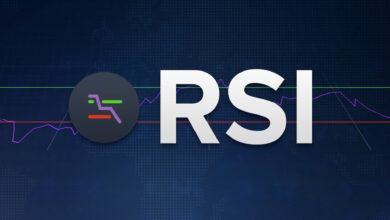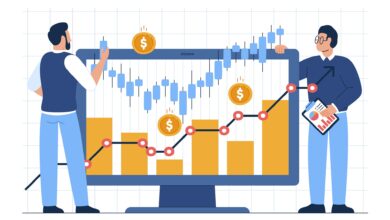The Role of AI Indicators in Financial Markets

AI indicators have revolutionized the way financial markets operate, positioning themselves as a game changer in the industry. These sophisticated algorithms utilize the power of artificial intelligence to analyze vast amounts of data and generate valuable insights in real time. By leveraging machine learning and pattern recognition, AI indicators have the ability to identify market trends, predict price movements, and detect trading opportunities with exceptional accuracy. This technology has significantly enhanced decision-making capabilities for traders and investors, empowering them to make informed choices and optimize their strategies. With their ability to process information at a speed and scale unmatched by humans, artificial intelligence indicators have emerged as a vital tool in navigating the complexities of financial markets. Stay with us in the continuation of this article from Forvest’s Blog.
How AI Indicators Work: Unveiling the Technology Behind
AI indicators utilize advanced algorithms and machine learning techniques to analyze financial market data and generate insights. These indicators are trained on vast amounts of historical data, including price movements, trading volumes, news articles, and social media sentiment. Through this training, the AI models learn to identify patterns, correlations, and anomalies in the data.
The technology behind AI indicators involves complex processes such as natural language processing, data mining, and deep learning. Natural language processing helps extract valuable information from news articles and social media feeds, allowing the indicators to gauge market sentiment. Data mining techniques enable the indicators to uncover hidden patterns and relationships within large datasets. Deep learning algorithms enable the indicators to adapt and improve over time as they encounter new market conditions.
Once trained, AI indicators can analyze real-time market data and generate predictions or trading signals. These signals provide traders with actionable insights, such as when to enter or exit a trade, which assets to buy or sell, and the appropriate risk management strategies to employ. By leveraging the power of AI, these indicators can provide traders with a competitive edge in the complex and dynamic world of financial markets.
Benefits of artificial intelligence Indicators in Financial Markets
AI indicators offer several significant benefits in the realm of financial markets. Firstly, they provide traders with highly accurate and timely insights based on the analysis of vast amounts of data. By leveraging advanced algorithms and machine learning, AI indicators can identify patterns and trends that may be difficult for human traders to spot.
Secondly, AI indicators have the capability to process large volumes of data in real-time, allowing traders to make informed decisions swiftly. This speed and efficiency can be crucial in fast-paced markets where opportunities arise and disappear rapidly.
Additionally, AI indicators can help reduce human bias in trading decisions. Emotions and cognitive biases often influence human traders, leading to suboptimal outcomes. AI indicators, on the other hand, rely on data-driven analysis, eliminating emotional factors and providing objective insights.
Moreover, AI indicators can adapt and learn from new market conditions, continuously improving their performance. They can adjust their algorithms and strategies based on changing market dynamics, enhancing their accuracy and effectiveness over time.
Overall, the use of artificial intelligence indicators in financial markets can lead to improved trading outcomes, reduced risks, and increased efficiency, empowering traders to make more informed decisions and stay ahead in a competitive market landscape.
Enhancing Trading Strategies with artificial intelligence Indicators
Integrating AI indicators into trading strategies can bring about significant enhancements and advantages. Firstly, AI indicators provide traders with valuable insights into market conditions, helping them identify potential opportunities and make more informed trading decisions. By leveraging advanced data analysis techniques, artificial intelligence indicators can uncover patterns, correlations, and market trends that may not be apparent to human traders.
Furthermore, AI indicators have the ability to process vast amounts of data in real-time, allowing traders to stay updated with market fluctuations and react promptly. This speed and efficiency can help traders capitalize on fleeting opportunities and optimize their entry and exit points.
In addition, AI indicators can assist in risk management by generating signals and alerts based on predefined parameters. Traders can set specific risk thresholds, and AI indicators can automatically identify and notify them of potential risks or deviations from their trading strategies.
Moreover, AI indicators can adapt and evolve with changing market conditions. They can learn from historical data and adjust their algorithms accordingly, ensuring that trading strategies remain relevant and effective.
Incorporating AI indicators into trading strategies empowers traders with valuable insights, improved decision-making capabilities, and better risk management, ultimately enhancing their overall trading performance.

While AI indicators offer numerous benefits, their effective implementation requires careful consideration of certain challenges. One crucial aspect is ensuring the quality and reliability of the data used to train the AI models. High-quality, accurate, and diverse data sets are essential to develop robust indicators that can perform well in various market conditions.
Another challenge lies in interpreting and understanding the output of AI indicators. Traders must possess the necessary knowledge and expertise to analyze and make sense of the indicator signals. This involves understanding the underlying algorithms, their limitations, and the context in which the indicators are applied.
Additionally, it is vital to strike a balance between automation and human intervention. While AI indicators can provide valuable insights, human judgment and decision-making remain crucial. Traders should use AI indicators as tools to augment their own expertise rather than relying solely on automated trading strategies.
Lastly, continuous monitoring and evaluation of AI indicators are essential. Markets are dynamic, and indicators that once performed well may become less effective over time. Regularly reassessing the performance of AI indicators and adapting them to changing market conditions ensures their relevance and effectiveness.
By addressing these challenges, traders can effectively implement AI indicators, harness their power, and gain a competitive edge in financial markets.
Evaluating the Accuracy of AI Indicators: Performance Metrics
When it comes to assessing the accuracy and reliability of AI indicators in trading, performance metrics play a crucial role. These metrics provide objective measures to evaluate the effectiveness of AI indicators, allowing traders to make informed decisions.
One commonly used performance metric is the accuracy rate, which measures the percentage of correct predictions made by the AI indicator. It provides a general overview of the indicator’s ability to generate accurate signals. Additionally, metrics such as precision, recall, and F1 score can provide insights into the indicator’s performance in identifying specific market conditions or patterns.
Furthermore, traders often rely on metrics like the profit factor, sharpe ratio, and maximum drawdown to evaluate the overall profitability and risk associated with using AI indicators in trading strategies. These metrics provide a comprehensive assessment of the indicator’s performance in generating consistent returns while managing potential downside risks.
Trading platforms like TradingView provide convenient tools to evaluate the accuracy and performance of AI indicators. Traders can backtest indicators using historical data, analyze performance metrics, and assess their suitability for different market scenarios.
By utilizing appropriate performance metrics and leveraging platforms like ai indicator TradingView, traders can effectively evaluate the accuracy and reliability of AI indicators, enabling them to make more informed trading decisions and optimize their strategies.
AI Indicators vs. Traditional Indicators: A Comparative Analysis
The emergence of AI indicators in financial markets has brought about a significant shift in trading strategies and analysis. In this comparative analysis, we explore the differences between AI indicators and traditional indicators, highlighting the advantages of utilizing AI-powered tools like TradingView AI indicators.
One key distinction lies in the data processing capabilities of AI indicators. Unlike traditional indicators that rely on predetermined rules and patterns, AI indicators leverage advanced algorithms and machine learning techniques to analyze vast amounts of data in real-time. This enables them to identify complex patterns and relationships that may go unnoticed by traditional indicators.
Additionally, AI indicators possess the ability to adapt and learn from changing market conditions. They can continuously update their models based on new data, allowing them to stay relevant and effective in dynamic market environments. This adaptability gives AI indicators an edge over traditional indicators, which may struggle to adjust to evolving market trends.
Furthermore, AI indicators often offer enhanced accuracy and precision in generating trading signals. By leveraging advanced statistical models and pattern recognition algorithms, they can identify subtle market patterns and generate more reliable predictions. ai indicator TradingView, for instance, provide traders with powerful tools that integrate seamlessly with their trading platforms, enabling them to leverage the benefits of AI-powered analysis.
In conclusion, the comparative analysis between AI indicators and traditional indicators highlights the transformative potential of AI in financial markets. With their superior data processing capabilities, adaptability, and accuracy, TradingView AI indicators offer traders a powerful toolset to enhance their trading strategies and gain a competitive edge in today’s dynamic markets.
The Future of Financial Markets: AI Indicators as a Standard Tool
The future of financial markets undoubtedly includes the widespread adoption of AI indicators as a standard tool. The rapid advancements in artificial intelligence, data analytics, and machine learning have revolutionized the way trading is conducted. AI indicators have proven their ability to analyze vast amounts of data, identify patterns, and generate accurate predictions, empowering traders with valuable insights.
As the financial industry becomes increasingly data-driven, AI indicators offer immense potential to improve decision-making, risk management, and overall trading performance. They have the capability to process complex data sets in real-time, detect subtle market trends, and provide traders with actionable signals.
Moreover, AI indicators can assist in automating trading processes, reducing human error, and enhancing efficiency. By leveraging advanced algorithms and predictive models, traders can make informed decisions, optimize their strategies, and adapt to changing market conditions.
With platforms like TradingView offering AI indicators that integrate seamlessly into traders’ workflows, it is clear that AI indicators are becoming an integral part of the financial market ecosystem. As technology continues to evolve and AI capabilities improve, we can expect AI indicators to become even more sophisticated, accurate, and widely utilized, shaping the future of financial markets.
Best Practices for Utilizing AI Indicators in Trading
When it comes to utilizing AI indicators in trading, there are several best practices that can help traders maximize their effectiveness and achieve better results.
Firstly, it is crucial to understand the AI indicators being used and their underlying algorithms. Traders should take the time to study and familiarize themselves with the indicators, their parameters, and how they generate signals.
Secondly, it is important to combine AI indicators with other technical analysis tools and indicators to validate signals and confirm trends. This helps to reduce false signals and provides a more comprehensive view of the market.
Additionally, traders should regularly backtest and optimize their trading strategies using historical data. This allows them to assess the performance of AI indicators over different market conditions and timeframes, identify any weaknesses, and make necessary adjustments.
Furthermore, staying updated with the latest advancements in AI technology and exploring new AI indicators available on platforms like TradingView can provide traders with a competitive edge.
Lastly, risk management is crucial when using AI indicators. Traders should set clear risk parameters, define their stop-loss levels, and implement proper position sizing strategies to protect their capital.
By following these best practices and leveraging the capabilities of AI indicators on platforms like ai indicator TradingView, traders can enhance their decision-making process and potentially improve their trading performance.
Ethical Considerations in the Use of AI Indicators
The use of AI indicators in trading raises important ethical considerations that traders and investors should be mindful of. One key aspect is transparency and accountability. Traders should have a clear understanding of how the AI indicators they rely on are developed and the data sources used. It’s crucial to ensure that the AI indicators are not biased or discriminatory in their decision-making process.
Another ethical consideration is the potential impact on market fairness. If a significant number of traders rely on the same AI indicators, it can create a self-fulfilling prophecy and distort market dynamics. This can lead to herd behavior and increased market volatility.
Additionally, traders should be cautious of over-reliance on AI indicators without exercising their own judgment and critical thinking. AI indicators are tools that assist in decision-making, but they should not replace human expertise and intuition.
Moreover, it is essential to be aware of the risks associated with using AI indicators from unknown or unverified sources. Traders should carefully evaluate the credibility and reputation of the providers, such as Forvest, and conduct thorough due diligence before relying on their AI indicators.
Furthermore, the emergence of indicators like the “Ethereum Vs Bitcoin Indicator” highlights the importance of considering the broader implications of AI indicators. Traders should assess whether the use of such indicators promotes a healthy and sustainable market ecosystem or exacerbates market imbalances.
In conclusion, ethical considerations should guide the use of AI indicators in trading. Traders should prioritize transparency, avoid herd behavior, exercise independent judgment, and evaluate the credibility of AI indicator providers like Forvest. By doing so, traders can uphold ethical standards while leveraging the potential benefits of AI indicators in their investment strategies.
Rating of this post
Rate
If you enjoyed this article, please rate it.



